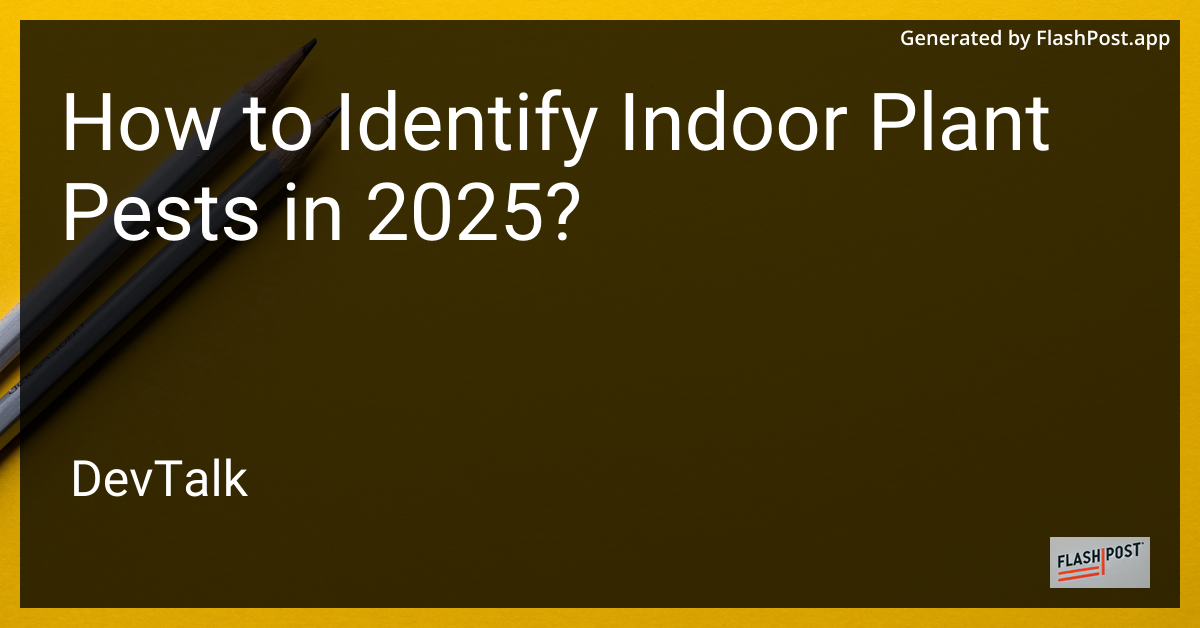How to Identify Indoor Plant Pests in 2025?

How to Identify Indoor Plant Pests in 2025
Indoor gardening has been a cherished pursuit for many, offering a lush green escape within the comforts of home.
However, caring for indoor plants in 2025 brings its unique challenges, particularly in identifying and managing pesky pests. This guide will help you identify the most common indoor plant pests this year, ensuring your green companions remain healthy and thriving.
Common Indoor Plant Pests and How to Identify Them
1. Aphids
Aphids are tiny, pear-shaped insects that can be green, black, brown, or yellow. They are typically found in clusters on the underside of leaves or stems. These pests can cause leaves to curl, wilt, or yellow and leave a sticky residue known as honeydew.
Identification Tips:
- Look for curled or distorted leaves.
- Check for sticky deposits on or beneath the plant.
- Inspect the undersides of leaves and young shoots.
2. Spider Mites
Spider mites are minute pests that can be hard to spot with the naked eye. They thrive in hot, dry conditions and create fine webbing on plants. Infestations lead to leaves developing yellow speckles and eventually falling off.
Identification Tips:
- Notice the presence of fine silk webbing, especially on the undersides of leaves.
- Look for leaf discoloration or speckled patterns.
- Use a magnifying glass to spot these tiny, moving specks.
3. Mealybugs
Mealybugs appear as small, white cottony clusters, often located at leaf joints or stem ends. They suck on plant sap, causing stunted growth and leaf yellowing.
Identification Tips:
- Look for white cottony deposits on plant parts.
- Check for sticky residue or honeydew.
- Inspect plants with a flashlight for better visibility.
4. Fungus Gnats
These are small, dark flies that thrive in moist conditions. The larvae, which resemble small worms, primarily affect the roots, causing seedlings or young plants to wilt and lose vigor.
Identification Tips:
- Notice small flies hovering around the soil.
- Check for larvae by inspecting the topsoil layer.
- Pay attention to plant growth rates and signs of wilting.
Maintaining Healthy Indoor Plants
Identifying pests early is crucial for maintaining the health of your indoor garden. Regularly inspecting plants, using natural pest control methods, and ensuring your plants have good drainage are vital steps in preventing pest infestations. For more on this, visit our guide on preventing planter drainage problems.
Additionally, selecting the right tools can make all the difference. For instance, using an appropriately-sized shovel for planting can aid in maintaining plant health and avoiding damage to plant roots.
Companion Planting Tips
Companion planting can also deter pests naturally. For those raising chickens, consider integrating companion planting for chickens into your garden design, as certain plants can protect chickens and boost plant growth.
By being vigilant and using these strategies, you can create a pest-free environment for your plants in 2025.
This SEO-optimized markdown article provides comprehensive guidance on identifying indoor plant pests, with strategic internal links to related topics for deeper engagement.